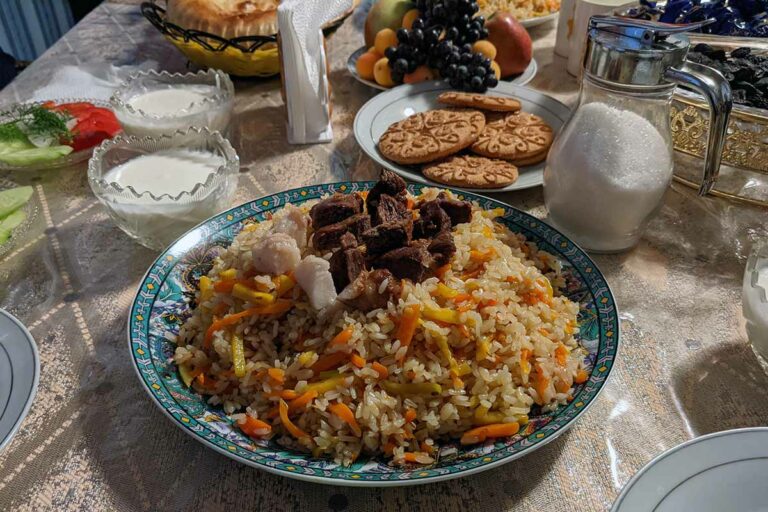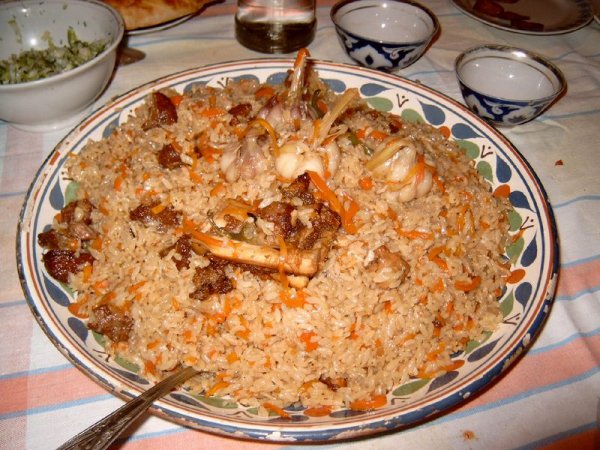Introduction: What is Plov?
Plov, also known as pilaf or pulao, is a rice dish that is widely popular in Central Asia, Caucasus, and the Middle East. It is a staple food in Tajikistan and is often referred to as the national dish of the country. The dish consists of rice, meat, and vegetables cooked together with spices to create a delicious and hearty meal.
Plov: The National Dish of Tajikistan
Plov has a special significance in Tajik cuisine and is considered the national dish of the country. It is often served at social gatherings, weddings, and other important events. The dish is also popular in neighboring countries like Uzbekistan, Kyrgyzstan, and Kazakhstan, but the Tajik version is known for its unique flavor.
Ingredients and Preparation of Plov
The main ingredients of Tajik plov include rice, lamb or beef, onions, carrots, and spices like cumin, coriander, and black pepper. The dish is prepared in a large cauldron called a kazan, which is placed over an open fire. The meat is seared first and then removed from the pot before the vegetables are added. The rice is then added and cooked with the vegetables and spices until it is fluffy and flavorful. The meat is then added back to the pot and mixed in with the rice.
The Role of Plov in Tajik Culture and Traditions
Plov is an integral part of Tajik culture and traditions. It is often served during religious holidays and important events like weddings and funerals. The dish is also an important symbol of hospitality in Tajikistan. Guests are often welcomed with a bowl of plov, which is seen as a gesture of respect and kindness.
Plov in Social Gatherings and Celebrations
Plov is a popular dish for social gatherings and celebrations in Tajikistan. It is often served in large quantities and shared with friends and family. The dish is also seen as a way to bring people together and strengthen social bonds. In fact, there are many plov festivals held throughout Tajikistan where people gather to share the dish and celebrate their culinary heritage.
Conclusion: Plov’s Significance in Tajik Cuisine
In conclusion, plov is an important dish in Tajik cuisine and culture. It is a delicious and hearty meal that is enjoyed by people from all walks of life. Whether it is served at a social gathering or as a symbol of hospitality, plov plays an important role in bringing people together and celebrating the rich culinary traditions of Tajikistan.


